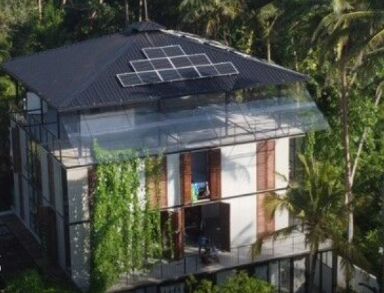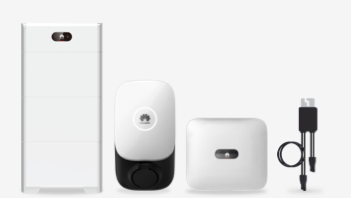In modern times marked by environmental
consciousness and rising energy costs, the utilization of solar power has
emerged as a sustainable and cost-effective solution for homeowners. Harnessing
the energy of the sun not only reduces your carbon footprint but can also lead
to significant savings on your electricity bills. This article explores the
practical steps and benefits of using a solar system to power your home.

Understanding
Solar Energy
Solar power is captured using photovoltaic
(PV) cells that transform sunlight into electrical energy. These cells are
commonly organized on solar panels positioned either on rooftops or in open
areas. The electricity generated by these panels can either be used immediately
or stored in batteries for later use. Follow the steps below to install a solar
system for your home:
Step 1:
Assessing Your Energy Needs
Before diving into solar power, it's
crucial to understand your home's energy consumption. Review your electricity
bills to determine your average monthly usage. This information will guide you
in sizing your solar system appropriately to meet your energy needs.
Step 2: Conduct
a Solar Site Assessment
Evaluate the solar potential of your
property by considering factors such as sunlight exposure, shading, and
available space. Ideally, solar panels should receive direct sunlight for the
majority of the day. A site assessment can be performed by a professional solar
installer or using online tools that consider your location and local climate.
Step 3: Choose
the Right Solar Panels
Selecting the right solar panels is a
critical decision in the solar power journey. Monocrystalline and
polycrystalline panels are the two main types, each with its own advantages.
Monocrystalline panels are more space-efficient and perform well in low-light
conditions, while polycrystalline panels are cost-effective and durable.
Step 4: Invest
in an Inverter
Solar panels generate direct current (DC)
electricity, but homes use alternating current (AC). An inverter is a device
that converts DC electricity into AC, allowing you to power your home
appliances. Consider the efficiency and capacity of the inverter to ensure
optimal performance.
Step 5: Battery
Storage for Off-Grid Capability
While a connected solar system to the grid
permits you to supply extra electricity to the grid in exchange for credits,
integrating a battery storage system allows you to accumulate excess energy for
subsequent use, particularly on overcast days or during power outages. This
enhances your energy independence and resilience.

Step 6:
Professional Installation
Installing a solar system is a complex task
best left to professionals. A certified solar installer will ensure that the
panels are securely mounted, the wiring is correctly connected, and the system
complies with local regulations. Professional installation also maximizes the
efficiency and longevity of your solar investment.
Step 7: Monitor
and Maintain Your System
Regular monitoring and maintenance are
crucial to ensure the longevity and efficiency of your solar system. Keep an
eye on your system's performance through monitoring tools provided by the
installer. Additionally, periodic cleaning of the solar panels and prompt
detection of any malfunctions will help maintain optimal efficiency.
Benefits of
Using Solar Energy
1. Reduced Electricity Bills: Producing your own electrical power allows for a substantial
reduction, and in some cases, complete elimination of your monthly electricity
expenses.
2. Environmental Impact: Harnessing solar energy is an eco-friendly and sustainable method,
diminishing your carbon footprint and playing a role in fostering a more
healthful environment.
3. Return on Investment: While the initial investment in a solar system may seem significant,
it pays off over time through reduced energy costs and potential government
incentives.
Conclusion
Harnessing the power of the solar system for home electricity is a practical and sustainable choice in today's energy
landscape. By carefully assessing your energy needs, choosing the right
components, and relying on professional installation, you can enjoy the
benefits of reduced electricity bills and a cleaner, more sustainable home.
Embrace solar power and take a significant step towards a greener and more
energy-efficient future.
